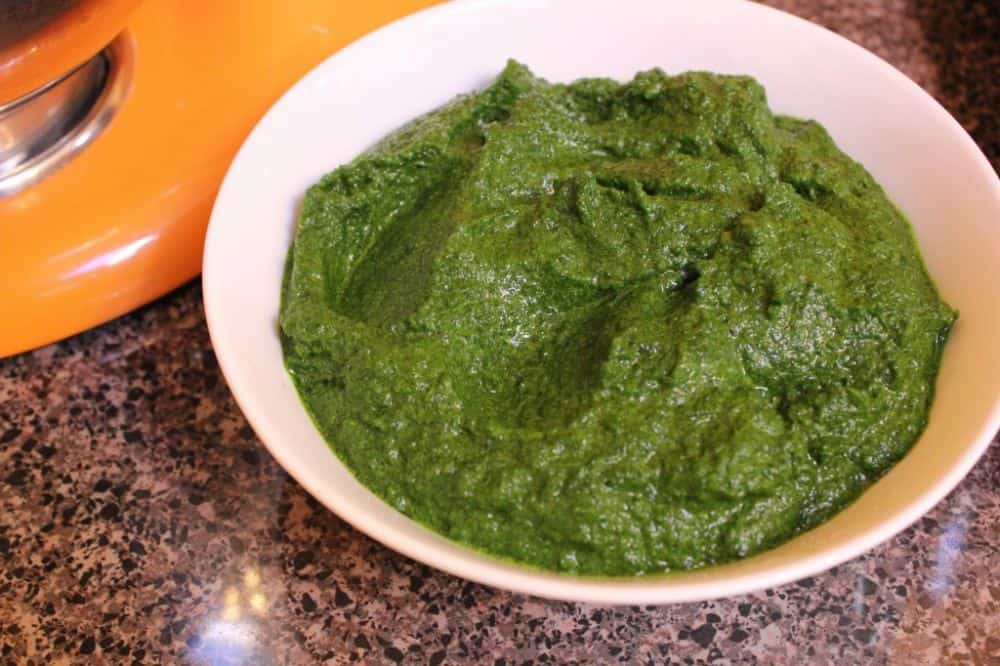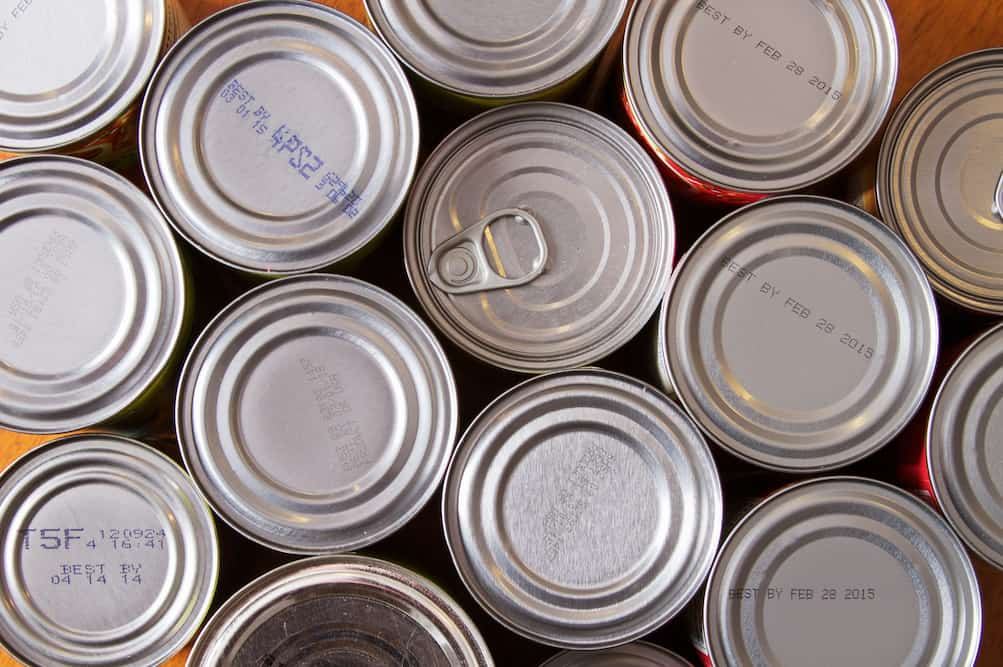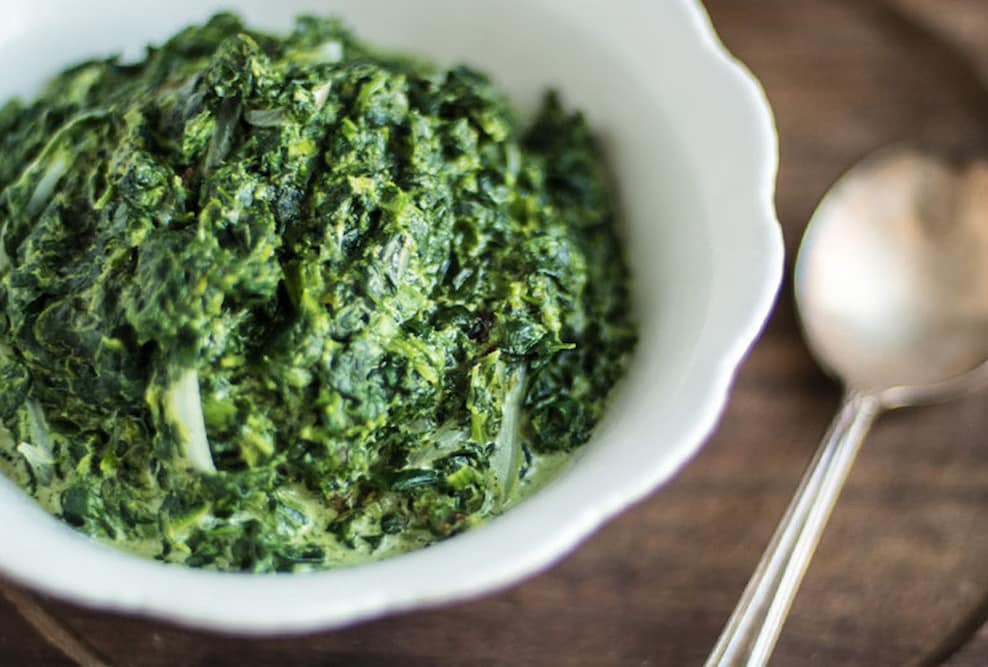canned spinach nutrients associated with healthy bones and teeth are calcium and magnesium. Vitamins A, C, E, and K, along with calcium, manganese, folate, magnesium, copper, and potassium, are just some of the many vitamins and minerals that may be found in abundance in spinach.
Further, it contains a lot of mineral iron, which is crucial since it helps the body transport oxygen.
Spinach is a fantastic source of dietary fiber, which is very beneficial to the digestive system. And to rub salt in the wound, a serving size of three cups of fresh spinach contains just 25 calories. Spinach, in my opinion, is one of the healthiest vegetables and merits the “Superfood” label for which it is so often praised.

While kale has received a lot of attention as of late, spinach is still a formidable foe for many good reasons. Disease-fighting phytochemicals, antioxidants, vitamins, and minerals abound in this vivid green leafy vegetable.
It is also a very bright green in hue. Spinach is one of the vegetables with the highest overall antioxidant content.
Free radicals have been related to an increased risk of cancer; antioxidants protect cells from this harm. Glutathione and alpha-lipoic acid are two powerful antioxidants that may be present in spinach.
They neutralize free radicals and prevent cell damage. Spinach is a great cancer preventative because of the phytochemicals it contains, which work by stopping cancer cells from dividing. Two crucial carotenoid pigments, lutein and zeaxanthin, protect the retina against free radical damage and age-related macular degeneration and cataracts, respectively. Numerous studies have shown that a daily intake of 6.9 mg is effective for warding off macular degeneration.

Raw spinach provides more than seven milligrams of lutein and zeaxanthin per serving, and two cups are all you need. These carotenoids, together with the vitamin A found in spinach, help keep eyes healthy and vision intact.
Numerous compounds in spinach help keep your heart in good shape. The minerals potassium and magnesium are crucial for reducing the danger of cardiovascular disease and normalizing blood pressure.
Folate plays a critical role in the body’s defense system against homocysteine, an amino acid that impairs blood vessel function and triggers the production of blood clots and hence contributes to the development of atherosclerosis.
It’s been shown that excessive levels of homocysteine raise the risk of cardiovascular disease and stroke. Researchers have shown that those who eat more spinach had a lower chance of acquiring atherosclerosis.
Spinach is a good source of vitamin K, which has been found to increase bone mineral density in people with osteoporosis and reduce the risk of bone fractures in otherwise healthy people.
Minerals like calcium and magnesium may be found in abundance in this green leafy vegetable. These elements are essential for the growth and maintenance of strong bones and teeth.

Spinach is available fresh, frozen, and tinned. It may be ordered with the extra convenience of already being wrapped and cleaned. Look for packets of fresh spinach that have leaves that are both crisp and bright green in color. Avoid anything that has changed color to yellow, is bruised, has wilted, or is covered in slime, since these are all signs of decay.
Spinach should be washed just before usage to ensure maximum freshness. If you put it in an airtight plastic bag beforehand, you may store it safely in the fridge for up to two weeks.
There’s no denying that spinach is one of my all-time favorite dark green leafy veggies. Its mild flavor makes it suitable for a broad range of dishes and procedures. They can be thrown into almost everything, from soups to spaghetti to sandwiches.
We like adding them to salads, blending them into breakfast smoothies for an additional nutritional boost (you won’t even notice the spinach), and cooking them in a skillet with garlic and olive oil for a quick side dish. The following is simple prepare an autumnal supper that makes use of seasonal ingredients such as fresh spinach and other veggies.
This salad is official: it will be included at my Thanksgiving dinner. Find out about the many kinds of spinach that are, and zero in on the exact kind that Popeye favored. You may discover that after you’ve tried all the many spinach varieties, you can’t get enough of them.

Spinach has successfully promoted itself as a nutrient-dense vegetable that provides not just strength but also an abundance of nutrients, hence enhancing an individual’s overall health. Whether it’s in a well-known cartoon or a tried-and-true recipe, you’ll always be able to spot the brand.
Flowers from the spinach plant have been eaten since ancient times, making the plant a staple in many cuisines.
It’s a wild edible green that may be as tall as 30 centimeters and as wide as 15 or 30 cm across its leaves. Spinach seeds initially sprout as tiny, immature fruits, no more than 10 millimeters in diameter.
The flowers that produce these tiny fruits are themselves just 5 millimeters in diameter. Spinach may have originated in what is now Iran and several other surrounding Asian countries, including what was then known as ancient Persia.
Edible greens may have evolved from Spinacia Tetranda, a wild edible plant that may be found in modern-day Anatolia.
In around 647 CE, the Persians introduced spinach to India, and from there it spread to ancient China. They called it a “Persian vegetable” since that’s where it originated from. Records show that spinach was first mentioned in writing in the Mediterranean region.
In the 11th century, the mathematician and translator Ibn Hajjaj wrote about spinach. Both Arabic and Persian translations of his works exist.
By the 12th century, when it was ultimately introduced to the Arabs living around the Mediterranean, the lush green vegetable had become a staple in their diets. The prickly-seeded variety of spinach was first discovered in Germany, and by the 14th century, many variations of the Spanish language had made their way into the main areas of England and France.
This was due to its dominance in the vegetable market, as described by the famous Arab agronomist Ibn al-Awwam in his written works. These leafy greens were an absolute need in the spring when no other vegetables could be produced in Spain.
Catherine de Medici’s accession to the French monarchy in 1533 ushered in an age in which spinach was more popular than ever before.
The queen, a native Florentine, had such a fondness for this tasty flower that she insisted on including it in every single one of her meals.
Since spinach started to be cultivated in a wide variety of forms around the world during the reign of Catherine de Medici, the term “Florentine” has come to be used to describe a wide range of cuisines that include vegetables.
Those varieties are now produced and consumed with great fervor all over the globe. Many different kinds of spinach exist, and you may be interested in learning more about them. If you are interested in reading more about it, continue reading.
Spinach is primarily divided into savoy, semi-savoy, and flat-leafed kinds. The most popular kind of spinach is called savoy. Each of these variants may be further subdivided into a great number of subspecies that are best adapted to certain regions, seasons, and environmental conditions. See the next section for further details on the various spinach options.
1. Savoy spinach, often called curly-leaf spinach, goes by the scientific name Spinacia oleracea. Curly-leaf spinach is another name for Savoy spinach.
The crinkled kind of leaf may be identified by its dark green color and somewhat crunchy, crisp leaves. Both the flavor and texture of savoy spinach and normal spinach are quite different.
Due to its strong flavor, most people prefer to have it cooked before eating it. Savoy spinach may be found in the produce section of any supermarket or market that carries frozen or canned foods as well as in fresh green bunches. Savory spinach is often used in salads due to the unique visual appeal it brings to the meal and the fact that each leaf is normally between five and six inches in length.

Savoy spinach has a superb nutritional profile since it is rich in beta carotene, vitamin C, and folate. In terms of nutrition, this is superb.
Two cups of raw, chopped savoy spinach contain only 13 calories, making it a great option for those trying to watch their calorie intake. This kind of spinach can withstand long periods in the oven without deteriorating in flavor or texture.
Due to its comparable flavor profile, savoy spinach is often used in place of collard greens, chard, and kale in culinary preparations. The most common ingredients that go into dishes that include it are garlic, dried fruits, onion, pork, and poultry.
These items are used in kitchens across the globe to prepare dishes centered on spinach. Savoy spinach is best cooked with several different kinds of cheese, chilies, almonds, and eggs. The flavor of the spinach will be enhanced in this way.
Be aware that it is from the goosefoot family of vegetables, which means it thrives best in the cooler months.
Because of this, it is preferable to grow it in colder regions rather than gather it in nations with warmer weather.

Your comment submitted.